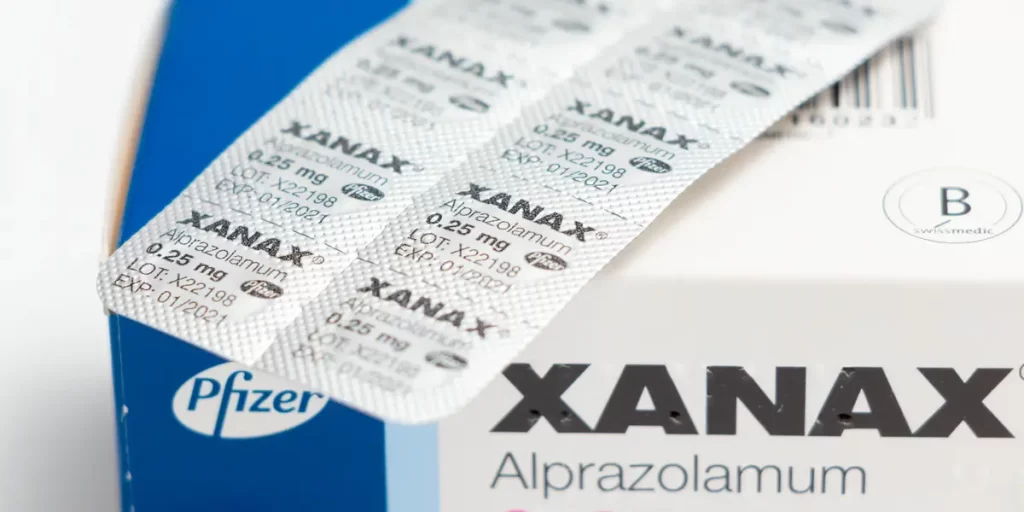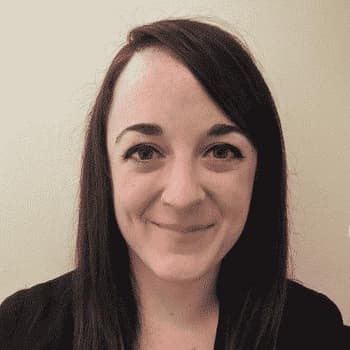Xanax Addiction Treatment and Rehab in Washington or Oregon
Written by Thomas Christiansen
& Medically Reviewed by Maureen McNulty
Medically Reviewed
Up to Date
Last Updated - 6/17/2022
View our editorial policy
Xanax is the brand name for alprazolam, a benzodiazepine medication that is prescribed for anxiety and panic disorders. Xanax is often misused recreationally and may be called bars, candy, downers, tranks or xannies. It relaxes people and reduces feelings of panic. Some people report that it gives them feelings of euphoria. People sometimes abuse Xanax as a way to come down more easily from the highs caused by other drugs like opioids or cocaine. Others may misuse it as a way to cope with stress from school or work.
Xanax can very easily cause dependence and addiction. While people who use Xanax exactly as prescribed are less likely to become addicted, it is still possible. The more a person misuses Xanax and the higher dose they take, the more likely they are to become dependent on it. While it can be very difficult for people to stop using this drug on their own, Xanax treatment is available to help people safely detox, learn to control their substance misuse and develop better coping strategies for dealing with high-stress situations.
Xanax Addiction Treatment Options
If someone needs help dealing with Xanax misuse, they can talk to a substance abuse specialist to determine an individualized Xanax addiction treatment plan. This plan may be different for each person based on how long they were taking Xanax, whether they were combining Xanax with other drugs or alcohol and whether they have additional mental health issues that need to be addressed.
Xanax addiction treatment first involves going through detox to remove the substance from the body. The next step is receiving inpatient or outpatient treatment consisting of group therapy, individual counseling, educational classes or treatment for other co-occurring disorders.
Medical Detox
It is important for people who have been using Xanax at high doses to go through detox at a medical facility. If someone has developed a physical tolerance to Xanax, their brain has adjusted to having the drug around all of the time. If the person suddenly stops taking it, their brain activity can suddenly speed up, leading to potentially dangerous side effects such as seizures. Xanax detox usually isn’t life-threatening, but withdrawal symptoms can be painful, uncomfortable and cause damage.
Many people who misuse Xanax are also mixing it with other substances. If someone needs to detox from multiple substances at once, their chances of experiencing severe withdrawal symptoms increases. At a medical detox facility, doctors can manage this process and provide any necessary life support. Counselors can help people through the difficult mental side effects such as anxiety that people often get when going through Xanax detox.
Those looking for help with Xanax detox in the Portland, Oregon metro area can turn to The Recovery Village Ridgefield for medical detox. They can help participants through the withdrawal process safely and transition people into additional treatment plans based on their individual needs.
Residential Rehab
Residential rehab, also known as inpatient rehab, is usually the most effective option for people struggling with Xanax addiction. This treatment plan generally begins with detox. Healthcare providers may slowly taper a person’s Xanax dose and manage their withdrawal symptoms as the person begins addiction treatment. During this process, the participant lives at the facility full-time and has access to 24/7 physical and mental health care.
During inpatient rehab for Xanax addiction, a person will often experience both individual and group therapy. This can help people identify their own reasons for turning to Xanax use and teach them to come up with different habits and behaviors that don’t rely on substance use. Participants may learn how to build a support system, identify their own personal triggers for when they are more likely to turn to Xanax and develop healthier lifestyle habits.
One reason why people frequently misuse substances is that they are struggling with co-occurring disorders. These may include mental health disorders, mood disorders and eating disorders. For example, college students who have a mental health disorder are twice as likely to report misusing prescription drugs. People with a personal or family history of mental illness should look for a Xanax treatment center that can evaluate them for mental health disorders and provide counseling and treatment for the other issues they may be dealing with.
Outpatient Rehab
Outpatient rehab treatment offers many of the same services as inpatient treatment, such as behavioral therapy and dual diagnosis for co-occurring disorders. The primary difference between the two is that while inpatient treatment requires participants to stay at the facility for the duration of their treatment plan, outpatient treatment options allow people to go home for the night. People may enroll directly into outpatient rehab, or they may transition into it after going through an inpatient program, depending on their needs.
The main advantage of outpatient programs is that they offer more flexibility. Participants may be able to still attend work or school, or keep up with childcare or family responsibilities. Outpatient rehab is also typically less expensive.
A disadvantage of outpatient treatment is that participants don’t get around-the-clock care. This means that people may encounter more temptation to relapse when they go home at night. For this reason, outpatient rehab is best for people with milder problems with Xanax use. People who go through outpatient programs should also be healthy enough to not need constant medical care and should have a strong support system at home that they can lean on.
Aftercare
Aftercare programs help people maintain sobriety after they’re done with rehab. Recovery is a constant process and aftercare programs can help people apply the skills they’ve learned in rehab to their daily life, adjust their behaviors based on their changing needs and avoid relapse. Aftercare may include:
- Regular appointments with a doctor to help maintain health
- Individual counseling with a therapist
- Group therapy to help people form support networks with their peers
- Support groups, recovery meetings or 12-step programs
While aftercare will likely look different for each person depending on their individual needs, the main goal of all of these programs is to help people learn how to stay sober long-term.
How Long Does Rehab Take?
Xanax rehab time will be different for everyone, depending on how severe their addiction is and how long they were using Xanax. It may also take longer for people who have other mental health disorders or who have other substance or alcohol use problems. Typically, rehab programs will last at least four weeks and may go up to a few months. Generally, the longer someone is in rehab, the more successful their recovery will be.
How Much Does Xanax Rehab Cost?
How much rehab costs depends on how long the program lasts and whether it is an inpatient or outpatient program. Many rehab facilities can work with patients to find a plan that meets their financial needs. The only way to know for sure what rehab costs might be is to call a treatment center and work with an admissions counselor to determine what type of treatment plan might be best.
Does Insurance Cover Xanax Rehab?
When the Affordable Care Act was passed in 2010, it provided additional coverage for substance abuse treatment. Marketplace health insurance plans all provide coverage for substance abuse treatment, and many state Medicare and Medicaid plans offer coverage as well. Many other private healthcare plans also provide rehab insurance. People who are wondering if their insurance covers rehab should talk to their insurance company to find out which types of services are covered, how many days of rehab are covered and whether there are any out-of-pocket costs.
Rehab without insurance will be more costly, but there are still ways to pay. Rehab centers may be able to provide payment plans so that participants can pay off their costs over time. Additionally, some banks offer personal loans to help pay for substance abuse services.

The Recovery Village Ridgefield
888 Hillhurst Rd. Ridgefield, WA 98642
(877) 704-0039
Finding a Xanax Treatment Center in Washington or Oregon
People looking for drug rehab near Portland, Oregon, should talk to counselors at The Recovery Village Ridgefield to learn more about how we can help treat Xanax dependence. The Recovery Village Ridgefield is a drug rehab facility in Washington state that offers both inpatient and outpatient treatment as well as long-term aftercare programs. Call today to learn more about professional drug rehab for yourself or a loved one.
Sources
Healthcare.gov. “Mental health and substance abuse coverage.” Accessed August 31, 2019.
National Institute on Drug Abuse. “What are Prescription CNS Depressants?” DrugFacts, March 2018. Accessed August 31, 2019.
National Institute on Drug Abuse. “What classes of prescription drugs are commonly misused?” Misuse of Prescription Drugs, December 2018. Accessed August 31, 2019.
Substance Abuse and Mental Health Services Administration. “Nearly One Third of College Student Substance Abuse Treatment Admissions with Co-occurring Mental Disorders Abuse Prescription Drugs.” December 14, 2012. Accessed August 31, 2019.
View Sources
Healthcare.gov. “Mental health and substance abuse coverage.” Accessed August 31, 2019.
National Institute on Drug Abuse. “What are Prescription CNS Depressants?” DrugFacts, March 2018. Accessed August 31, 2019.
National Institute on Drug Abuse. “What classes of prescription drugs are commonly misused?” Misuse of Prescription Drugs, December 2018. Accessed August 31, 2019.
Substance Abuse and Mental Health Services Administration. “Nearly One Third of College Student Substance Abuse Treatment Admissions with Co-occurring Mental Disorders Abuse Prescription Drugs.” December 14, 2012. Accessed August 31, 2019.
Authorship



